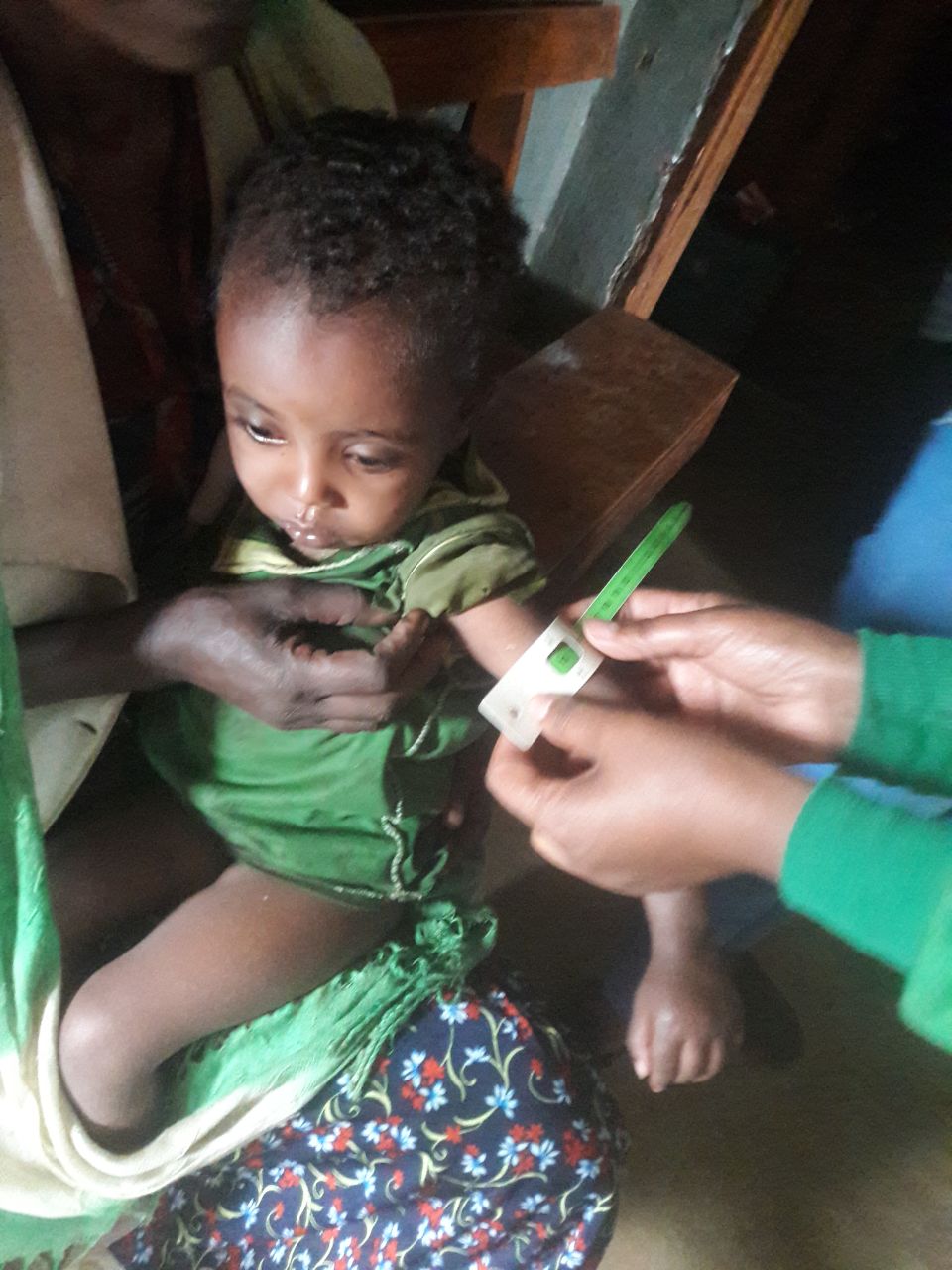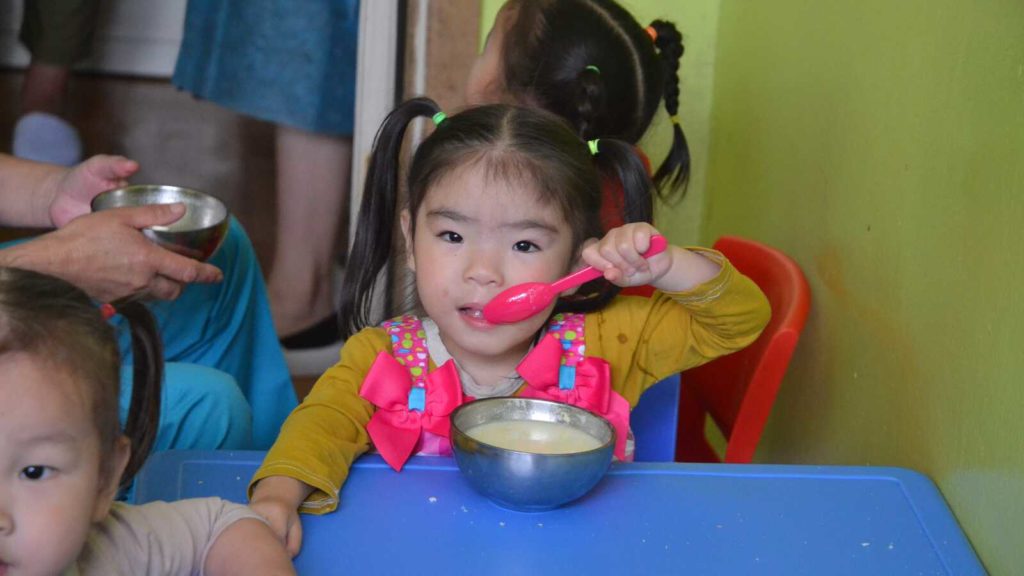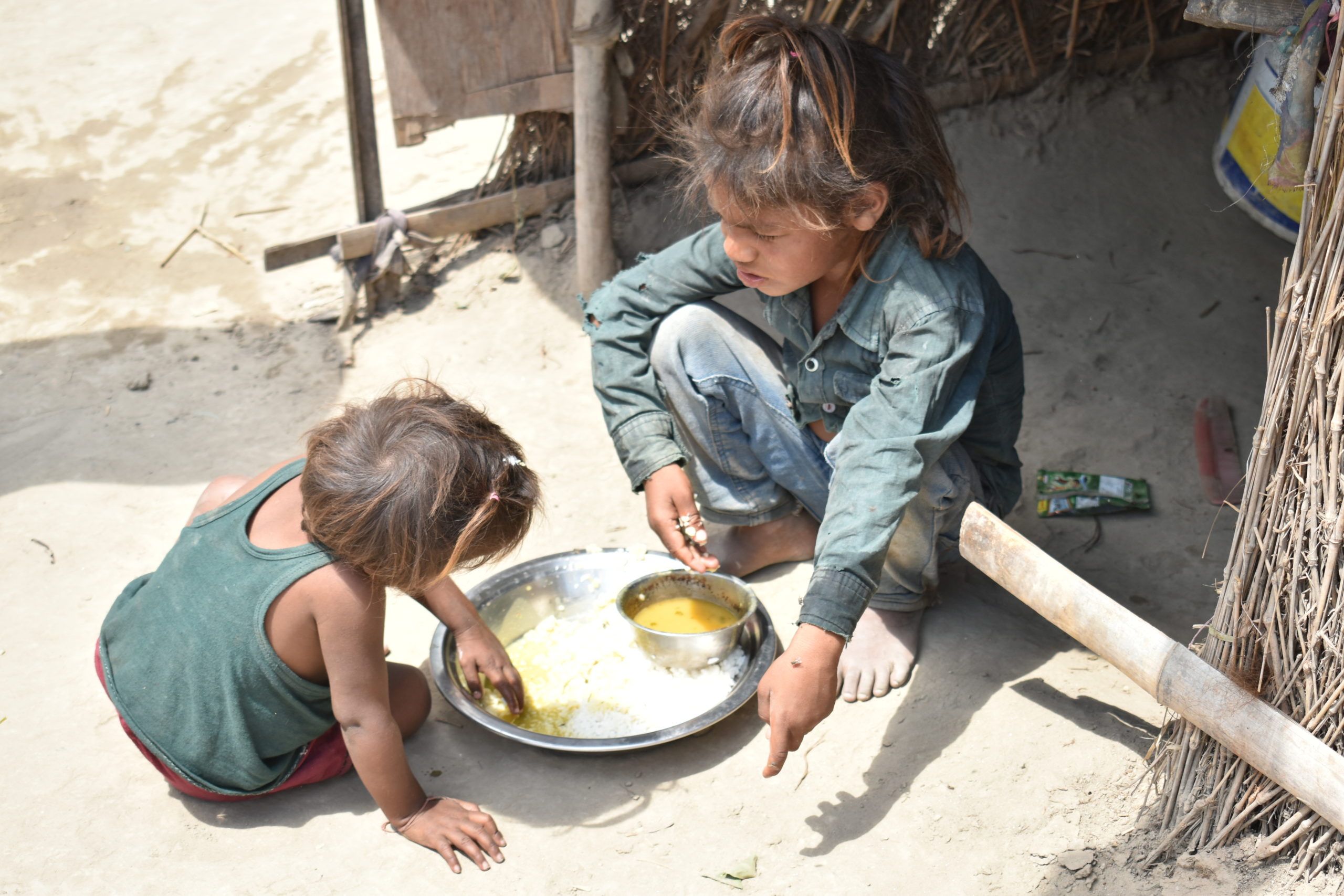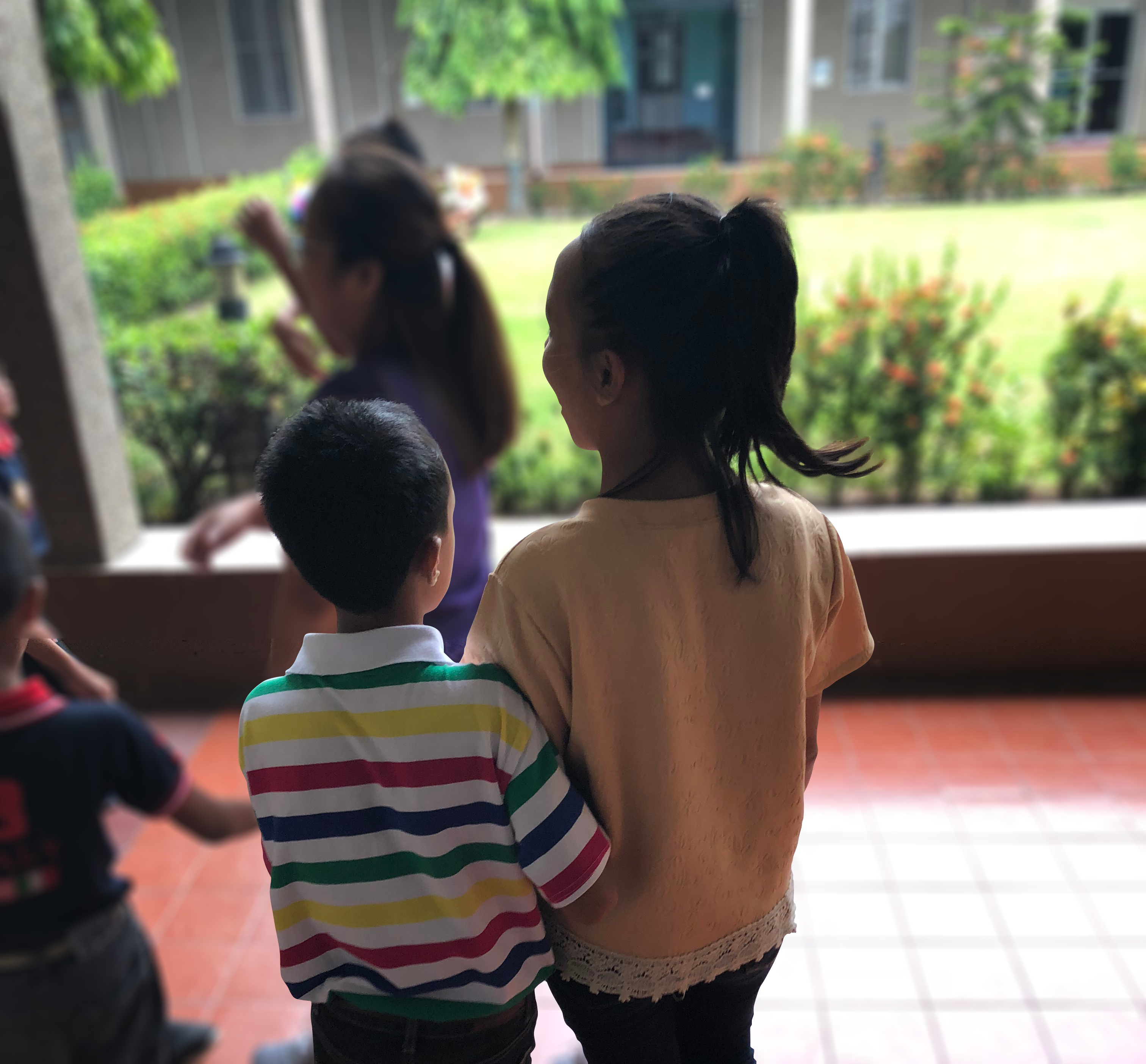Children around the world are acutely malnourished due to the effects of COVID-19. In this Q&A, Holt’s nutrition and health programs director, Emily DeLacey, shares about why this happened, what Holt’s doing about it and how children are fighting to survive.
How has the pandemic affected global hunger rates among children?
Things have gotten really, really serious. The World Food Program expects hunger to double in households by the end of this year. As we reach the end of 2020, almost 300 million children and families are going hungry every single day. This number is up from 135 million in 2019. That’s really high and growing at an alarming rate.
A lot of our lower- and middle-income countries have been hit the hardest. This isn’t necessarily in terms of the number of those infected by COVID-19, but the number of families who were already living very close to the edge of hunger, who are now pushed over that threshold because of the impacts of COVID.
Holt’s families are definitely having a hard time of it. A lot harder than they were before.
We’re seeing steep declines in household incomes, nutritious food is not available or affordable, and health services have been interrupted. Even month-long COVID restrictions have caused a dramatic number of children to become malnourished. It can happen in a very short amount of time.
We expect to see the prevalence of acute malnutrition greatly rise.
There are two main types of malnutrition that we see.
The first is chronic malnutrition, when you might have a little bit of food over a long period of time. It’s not enough to support you to fully grow, but it’s enough to sustain you day to day.
But acute malnutrition is when children had regular nutritious meals in their day, but then all of a sudden they don’t have meals anymore. Right now, children are experiencing acute hunger, which is different than the long-term chronic hunger — although it’s possible and common for children to experience both at the same time. The acute hunger really increases children’s risk of dying.
Children with [acute malnutrition] often have experienced a recent and severe weight loss. They might be very thin, with thin arms and legs — thin in all the places young children typically store fat to help them grow. They act very lethargic — they don’t have a lot of energy and they no longer act hungry. This is really hard for families because they know that the child is sick, that they’re malnourished, but the child still might not have the hunger cues or the response to food that you would expect from somebody who is very hungry. This is because their body is starting to shut down. Acute malnutrition is most serious for children under 5 because their risk of mortality greatly increases.
The number of children who are acutely malnourished right now is probably outside of our realm of understanding. It’s bigger than we can really comprehend.
The number of children who are acutely malnourished right now is probably outside of our realm of understanding. It’s bigger than we can really comprehend.
Untreated malnutrition can have dire effect’s on children’s brain and physical development. If we don’t address malnutrition now, children will be impacted for the rest of their lives.
Hunger is a multi-faceted issue, especially in the time of COVID. Children are going hungry right now because of:
- Sudden Job Loss: At the beginning of the pandemic, Holt’s country programs reported that anywhere from 7% to 83% of Holt-supported households had lost their jobs or experienced significant loss of income. Many Holt-supported families work as construction workers, maids, cooks, small business owners or in the tourism industry — all jobs that came to an abrupt halt. Most of these families are day laborers. Every single day they’d go to work, get a little bit of pay, then buy food. But when jobs suddenly paused to stop the spread of COVID, families stopped getting that money every day — and suddenly couldn’t buy food.
- Missed Medical Care: It’s been really hard to manage [malnutrition] at a community level because community health workers haven’t been able to get out to identify and treat malnourished children due to COVID restrictions. Families can’t access health services because medical centers or community programs are closed. For example, most children in our programs require a deworming oral medication twice per year. Since families are not leaving their homes to get this treatment, children’s malnutrition is further exacerbated because of untreated intestinal worms.
- Closed Schools: Almost every Holt-supported education program includes a free, nutritious meal. For example, in Haiti we provide breakfast every day — eggs, peanut butter sandwiches and fruit. We also have children in Ethiopia who were part of a school lunch program. Around the world, children are no longer able to receive those meals if their school is closed due to COVID. For a lot of children this was their only consistent meal of the day. Not having this really pushes children into a dire situation and adds even more pressure onto families.
- Rising Food Costs: Even the most basic food items have become much more expensive due to pandemic-caused inflation. The cost of a bottle of milk in China rose by 60%, pork by 40% and flour by 20%. In India, eggs are 20% more expensive, dhal is over 22% more expensive and the cost of potatoes and onions have both nearly doubled. In Thailand, even rice is 20% more expensive. For a family living in poverty that’s surviving on just a few dollars a day total, these higher prices mean that they can’t buy food and their children are going hungry.
- Transportation & Trade Issues: Many families we support with farming or small livestock grants are unable able to get their food to market because there’s no transportation, or markets are closed. So the small income they were receiving from these income-generating activities — such as sewing or farming or raising livestock — came to a halt. Right now, we’re receiving a lot of feedback from the field in Ethiopia and Haiti specifically — both of which recently made the World Food Program’s list of top 10 countries with the most serious food crises. These communities are dealing with COVID and COVID restrictions, but also political unrest. So that really disrupts supply chains from farms into cities. Food is just not getting into the cities. Or, we were hearing in Uganda that trucks bringing food into the country are having to quarantine at the border for two weeks. This causes the food to rot and never make it to the people who need it.
- Migration: Many migrant families in India that we support have gone back to the countryside because they’re afraid of COVID in the cities. But situations in the country are often just as bad as in the cities. Instead of their day labor jobs, these families are now working as farmers. But they can’t get their produce to the market because of halted transportation and closed markets. So these families are still going hungry.
How has Holt addressed children’s hunger and malnutrition this year?
Holt has been amazingly proactive. Through the support of donors, we’ve been able to address the urgent, emergency needs of so many children and families. A lot of families needed just basic distributions of food during tough times — which Holt was able to do.
We’ve been really concerned about the nutritional status of children in our programs and have adapted to serve them. Because families were not supposed to be going out and traveling places, we partnered with community health services in Ethiopia going door-to-door to screen more than 9,000 children for malnutrition. This allowed families to stay home and not expose vulnerable children to COVID. And with medical staff fully decked out in PPE, they could still identify and treat malnutrition early and effectively.

Because food inflation costs make purchasing food really hard for families, we’ve worked a lot on improving household food security. In places like Thailand, India and Ethiopia, we’ve been doing that a lot through kitchen gardens. This small thing can really improve families’ diet diversity. We provide vegetable and tree seedlings to help families plant small gardens on their patios in urban areas or outside their front door in rural areas. This little bit of extra nutrition makes a world of difference and helps to increase food resiliency to costs at the household level.
What is Holt’s strategy for fighting hunger in 2021?
I think 2020 has really shown us that we need to expect changes all the time. And that solutions that work in one country or community might not work in a similar country or community. Our Holt teams in the field need to continue to be responsive to families and where they’re at.
Hunger is always number one. If children are hungry, they can’t learn. If families are hungry, they can’t work. Until you address basic human needs, all the other levels of development come to a screeching halt.
Hunger is always number one. If children are hungry, they can’t learn. If families are hungry, they can’t work. Until you address basic human needs, all the other levels of development really come to a screeching halt. There’s that phrase, “Why give a man a fish when I can teach him how to fish?” which is nice in theory, but if the man is hungry, he can’t learn how to fish. He can’t learn how to do all these other activities to support the family if he is hungry. Until that base need is met, meeting other needs just doesn’t work. This is why Holt is working to address children and families’ basic hunger needs now — it’s the first step in empowering children and families to overcome poverty and reach their fullest potential.
Emily DeLacey MS, RDN, LDN is a registered and licensed dietitian/nutritionist and a PhD candidate with the London School of Hygiene and Tropical Medicine. As the director of Holt’s nutrition and health programs, Emily has managed nutrition intervention and behavior change programming in more than 15 countries. She is passionate about advocating for the nutritional needs of children and families.

Support Holt’s Child Nutrition Program
Your gift to Holt’s child nutrition program will provide life-changing nutrition and feeding support to children living in poverty and in orphanages around the world.



